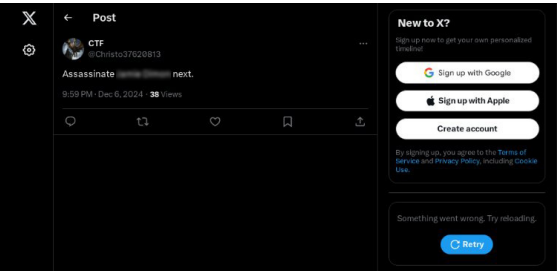Executive protection can no longer be siloed. High-profile executives face increasing risks not just from cyberattacks and doxxing, but also from real-world harm linked to online exposure. From targeted harassment campaigns to threats fueled by leaked personal data, the line between virtual and physical safety is fading. As a result, having proper digital executive protection is just as critical as traditional physical security — and often, it's the first layer of defense.
The Merging of Physical and Digital Threats
The notion that digital and physical events exist separately is problematic, especially when considering the protection of your organization’s executives. Digital threats can easily escalate into physical dangers, and executives are primary targets for digital to physical attacks.
Digital threats like doxing, where threat actors gather information from public sources, social media, or leaked records to publicly expose personal details, can lead to serious consequences. Even social engineering via LinkedIn or personal accounts can lead to impersonation or on-site access attempts.

As seen in the example above, having high-profile individuals on highly-trafficked sites can make them easier to target – even for physical security risks.
Gaps in Executive Protection
Most physical security teams aren’t equipped to monitor digital footprints which can cause a gap in safety. Organizations must make sure they have proper executive protection for the digital footprint – and not just for the enterprise network. Even family members’ online behavior can unintentionally expose executives.
Here’s a scenario in which executive protection plays a role in the safety of the individual and the organization they serve.
A high-profile CEO of a tech company became the target of a coordinated online harassment campaign after a controversial product announcement. Personal information, including home address and family photos, was leaked through social media and obscure forums, leading to real-world threats and a security scare at the executive's residence. The situation quickly escalated due to the lack of proactive digital risk monitoring and slow response to the data exposure. With digital executive protection in place — such as continuous dark web monitoring and real-time alerting — the personal information could have been flagged and mitigated early, preventing the incident from spilling into offline danger.
What Is Digital Executive Protection?
Digital executive protection is the protection from online threats and risks to safeguard individuals like executives and public figures. The following can be included in a strong executive protection strategy:
- Continuous monitoring of personal and public data sources
- Threat intelligence for executive-specific targeting
- Digital footprint reduction — minimizing exposure on people search sites, social media, and other digital forums
- Coordination between cybersecurity, communications, legal, and physical security teams
Create an Advanced Plan
Prioritize solutions that quickly detect and validate threats targeting executives. An advanced executive protection plan should encompass email, social channels, and security awareness training for future threats. Don’t forget to include all security teams as digital threats can become physical threats – don’t leave gaps!
Monitor social channels, as well as dark web and leaked credentials to find exposed data, and then treat those identified threats with urgency and thoroughness. Your organization also needs to maintain a solution that not only identifies the threats but mitigates them quickly.
Conclusion
Physical protection is no longer enough — today’s threats begin in the digital sphere. Organizations that integrate digital executive protection show a higher level of risk maturity and resilience. Acting proactively not only safeguards the individual executive, but also protects the brand, investor confidence, and public trust. The urgency is clear: digital threats are evolving, and the time to get ahead of them is now.
